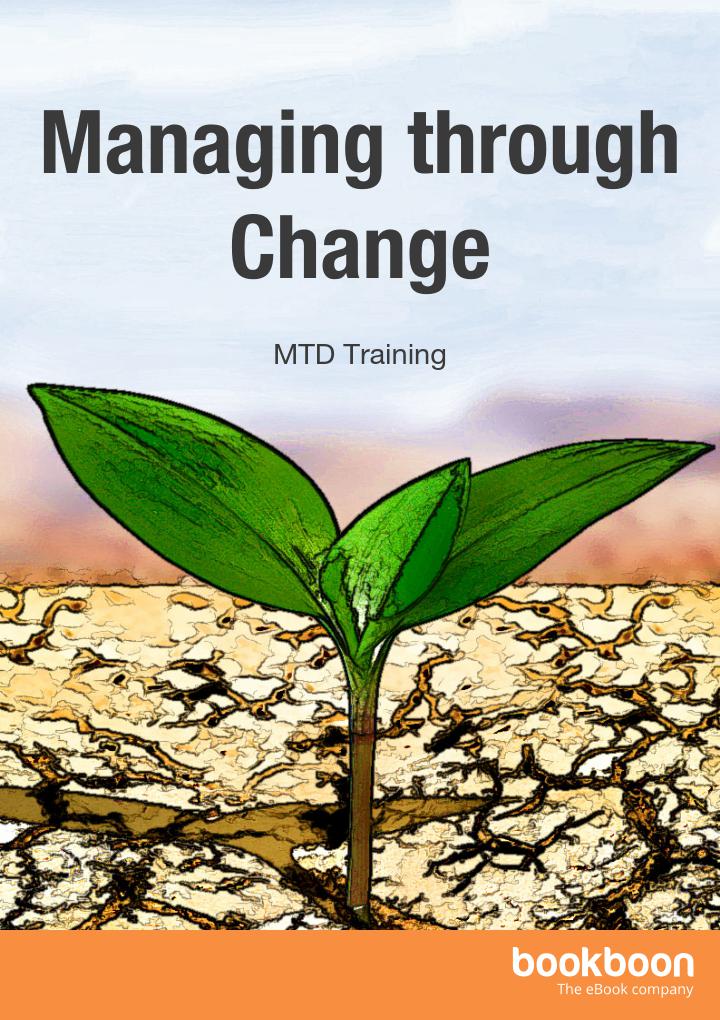Change management: The process of change

Change management is the discipline that guides how managers prepare, equip and support individuals to successfully adopt a change in an organisation in order to drive success and outcomes. Leaders can manage changes such as employees leaving, new business models, alterations in codes and rules and new processes. No matter what the change, there will likely be some resistance from team members and it is a leader’s job to manage that change efficiently and effectively. Here are the 4 phases of the process of change management.
Change management phase 1: Denial
The process begins as soon as the warning of upcoming change has been presented to a group. There is a general environment of denial. Thoughts are shared such as ‘This isn’t necessary!’ or ‘The way we’ve always done things works just fine.’
At this stage, the focus of the group is on the past. The team members have adopted a kind of ‘if it’s not broke, don’t fix it,’ attitude. They are still in denial of the need for the change.
Denial exists in the environment when change is first proposed. The group is focused on the past and doesn’t see the need for the change to occur.
Change management phase 2: Resistance
 The group at this stage is feeling resistant to the change. This resistance could be expressed out loud or could be expressed passively. At this point in the process, individual performance may start to suffer. The individual may begin wondering what he or she is doing in the organisation, and what he or she means to management as a whole. The manager’s challenge is to overcome the resistance of each individual, which can take time and patience to do successfully as each person will respond differently. It will take being attentive to what is happening with each individual in order to successfully overcome their resistance.
The group at this stage is feeling resistant to the change. This resistance could be expressed out loud or could be expressed passively. At this point in the process, individual performance may start to suffer. The individual may begin wondering what he or she is doing in the organisation, and what he or she means to management as a whole. The manager’s challenge is to overcome the resistance of each individual, which can take time and patience to do successfully as each person will respond differently. It will take being attentive to what is happening with each individual in order to successfully overcome their resistance.
Change management phase 3: Exploration
The next stage occurs when the individuals begin to accept that the future will involve the change. They now begin to consider what the change will actually mean to them individually. Managers should be prepared to share a lot of information and expect a lot of questions
at this point. The exploration phase is a time when employees are ‘testing the water.’ They are trying to figure out what life after the change will be like. This is a sort of learning phase.
There are several different things that the manager can help the group do in order to get through this phase:
- Manage stress
- Clearly define the vision
- Communicate new values
- Identify the strengths of the new situation
- Seek benefits and opportunities
- Reaffirm there is no going back
- Educate, Train, and clarify
Change management phase 4: Commitment
 This is the final stage of the change process. The team has become committed to the change in their own individual times
This is the final stage of the change process. The team has become committed to the change in their own individual times
The commitment is now part of the ‘environment’ in which they are operating, not just their opinion about whether or not
the change should go through. At this point, managers can expect to see some positive behaviors from employees, such as:
- Modeling the new behavior
- Taking responsibility for implementing the change
- Asking questions that show proactive thinking in how to proceed towards the ‘model’
- Assisting others through the change process
- Focusing on the future – both to the final implementation of the change and beyond
In the final phase, commitment is now part of the environment in which the employee operates. At this point, the employees are part of the change, not just in agreement with it. They modeling the change for others, doing what is possible in their own job responsibilities
to implement the change, and may even be excited about what is to come.
As a manager, you have now successfully managed change. Your employees are now part of the change, not just in agreement with it. Leaders should realise that employees will all reach this phase at different points. Some may move from denial to commitment rather quickly, while others may need more support from you or other leaders in order to feel comfortable progressing through the stages. You will need to be patient, but firm during this time as you help each employee make the transition to commitment.




